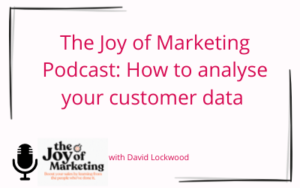While the customer is king, it’s easy to forget the big picture in frantic day-to-day environments. As marketers obsess on performance, finance on efficiencies and merchandising on product and category, there’s a danger no one’s considering the customer.
When we spoke to leaders in the retail and eCommerce sector, they acknowledged this, with some admitting they were brand-led while others campaign or trading-focused rather than customer-led. Ultimately gaining a deep understanding of customers must be the goal, and overlaying a customer lens in every department enhances decision-making across any business.
Regaining sight of the customer
While the importance for brands to regularly review the health of their customer base was recognised, often this hadn’t happened. For some, significant increases in customers over the pandemic meant most of their focus was taken up responding to an upsurge in business. Others were having difficulty identifying ‘Covid cohorts’, as existing customer behaviours had changed so much, they seemed very similar to those newly recruited.
But in this post-pandemic world, many wanted help in understanding how their customer bases have been shaped and the different traits of customers recruited during Covid versus their regular customers to identify how to engage correctly with them.
Adopting a customer-centric approach
So what should businesses focus on? It’s very much a question of going granular with the data.
Understanding new customer recruitment and retention are critical. Of particular focus around new customers is looking at how they have entered the business, what they bought – and went on to buy –, the channels they use, how they prefer to purchase and the speed in placing their second order. In going granular and understanding their behaviours, purchases, gender, geography and spend value, you begin to understand the key drivers for your business.
It also provides insights into the value of your new customers. Customer quality can vary based on recruitment channel and initial spend, making it critical to look at their future potential value to identify the traits of a good customer. This must then feed into your recruitment strategy, so it focuses on bringing in profitable customers.
And to have real value, avoid broad insights. While one brand approached its different customer types by focusing on the ‘average’, this brought the danger of distorted decision making. With buyers of specific products having different profiles, understanding these differences was lost by focusing on the average.
But equally as important as using your data to understand customers is ensuring their voice is heard.
Embedding the customer voice into your business
Understanding customers’ opinions is essential to avoid the danger of making decisions in an echo chamber. Although customers often won’t tell you what’s right, by understanding their frustrations and what’s wrong, they inform steps to address them.
It’s important to acknowledge customer feedback and when acting on it, telling customers what changes have been made to address their issues. This ‘you talk, we listen’ approach shows the customers there’s value in taking time to provide feedback, yet it’s often overlooked, which discourages future input.
Whether surveys, focus groups or even home visits, many brands found customers didn’t need to be heavily incentivised to offer feedback, and they all benefited from improved engagement with this group.
One business that created a customer panel recommended having x10 the number of lapsed customers to active customers. This ensured responses weren’t skewed to your most loyal, supportive customers, so delivered greater value.
Ultimately, those companies taking the time to ask for and receive feedback could make braver decisions for greater business impact.
Customers don’t know everything
But when it to comes to understanding your customers’ purchasing habits, it’s essential to remember customers often don’t know what they want until you show them.
While it’s important to highlight what they’re most likely to buy in your communications, exposing them to products they mightn’t usually consider is vital. Part of any multi-channel business’s role should be to help customers discover new things. This gives you more reasons to engage with them and the opportunity to drive greater value.
While it’s easy to become overwhelmed with data, don’t lose sight of the fact it’s a tool to enhance and optimise strategy. So if you’re unsure how to start building (or rebuilding) a customer-centric marketing approach, reach out to us at [email protected], and we’ll be happy to chat with you.




